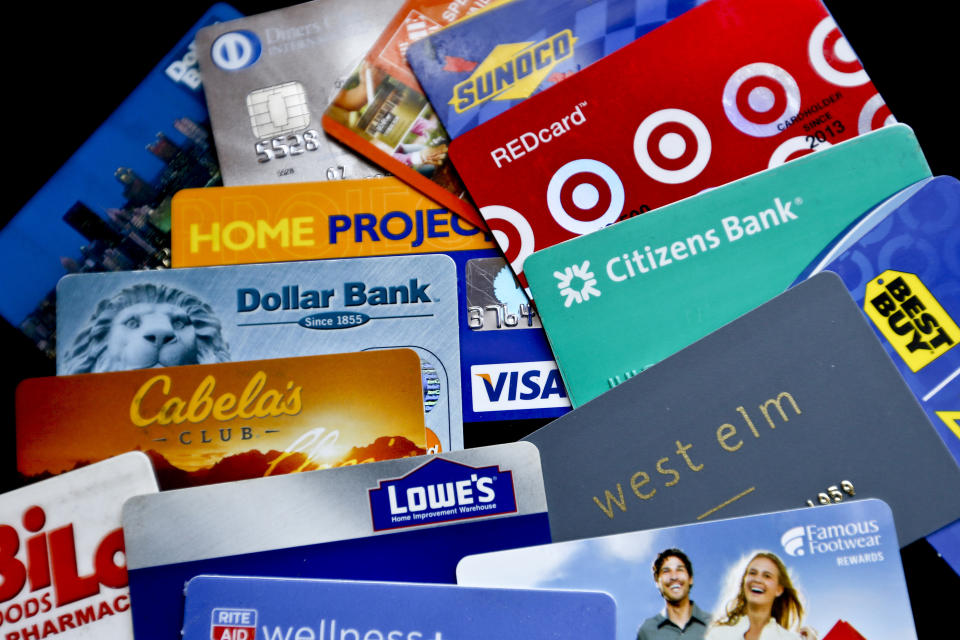The average retailer-branded credit card has a ridiculously high APR
With the holiday shopping season kicking off, you might find yourself being asked at the checkout counter to sign up for a retail store credit card in order to get a discount on the spot.
In fact, half of the U.S. population has applied for a retail credit card, with 94 million admitting they signed up impulsively at the checkout. Before you say “yes,” though, be sure to check the annual percentage rate (APR).
That’s because the average APR on a retail store credit card is 25.65%, almost 5% more than a traditional credit card (20.82%), according to a report from CreditCards.com that examined agreements for 81 cards from 58 retailers.
Breaking that number down further, the store-only cards have a higher average APR of 27.23% compared to the co-branded retail cards that can also be used at other locations with an average APR of 23.06%.
The retailer’s with the highest APRs include store cards from Brandsource (30.49%), Big Lots (BIG) (29.99%), Piercing Pagoda (29.99%), Staples (29.99%), Zales (SIG) (29.99%), and Discount Tire (29.99%), the report found.
The lowest possible retail card APRs include Dillard’s American Express 11.99% – 26.99%, Military Star Card 12.24% (for retail plan purchases, 0.00% for military clothing plan purchases), Academy Sports + Outdoors Visa (V) Signature 13.24% – 25.24%, Kroger (KR) Rewards World Mastercard (MA) 13.99% – 25.99%, and Tractor Supply Co. (TSCO) Personal Credit Card 13.99% – 27.99%.

It’s not worth it
According to CreditCards.com’s industry analyst Ted Rossman, most people would be better off with a general purpose credit card.
“We don’t want anybody to fall in the trap of thinking, ‘0h I’m getting rewards. It’s all good.’ If you’re getting 1%, 2%, even 5% back in rewards it pales in comparison,” Rossman said of store credit cards.
The most important thing for anyone considering a credit card — traditional or retail — is paying the bill in full every time to avoid paying interest, he explained.
“If they can’t do that, then they really need to stick to cash or debit and don’t get enamored with rewards.”
To illustrate the importance of paying the bill in full, if you charged $1,000 on a retail store credit card with a 29.99% APR and only paid the minimum of $34.99, you’d end up paying $2,267.70 total. That works out to be $1,267.70 in interest. What’s more, you’d be in debt for 85 months, or more than seven years.
“If you can pay your bill in full, that’s when credit cards can be a great thing that really works for you,” Rossman added.
In most cases, the general purpose cards offer “much more attractive rewards” than retail cards. That said, there are times when retail cards might make sense.
“Typically, on these retail cards, when you get rewards, a lot of times there’s an initial sign up bonus — and this is what they try to win you over with at the checkout counter — of 10% off today’s purchase,” Rossman explained. “Unless you’re making a really big purchase, that’s usually not worth it in comparison to what you can get on another card.”
Another instance is if you’re a loyal shopper for a particular retailer.
To avoid the pressure altogether this season, when you’re asked if you’d like to sign up for a card, simply ask for a brochure to review at home.
—
Julia La Roche is a finance reporter at Yahoo Finance. Follow her on Twitter.

